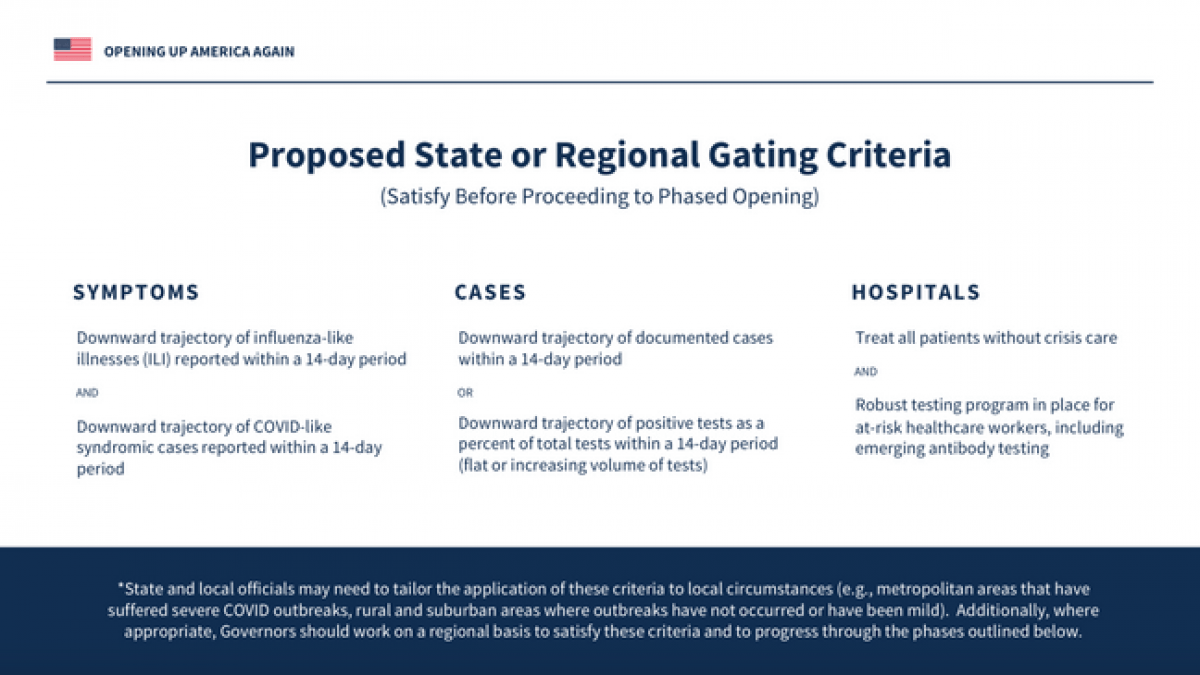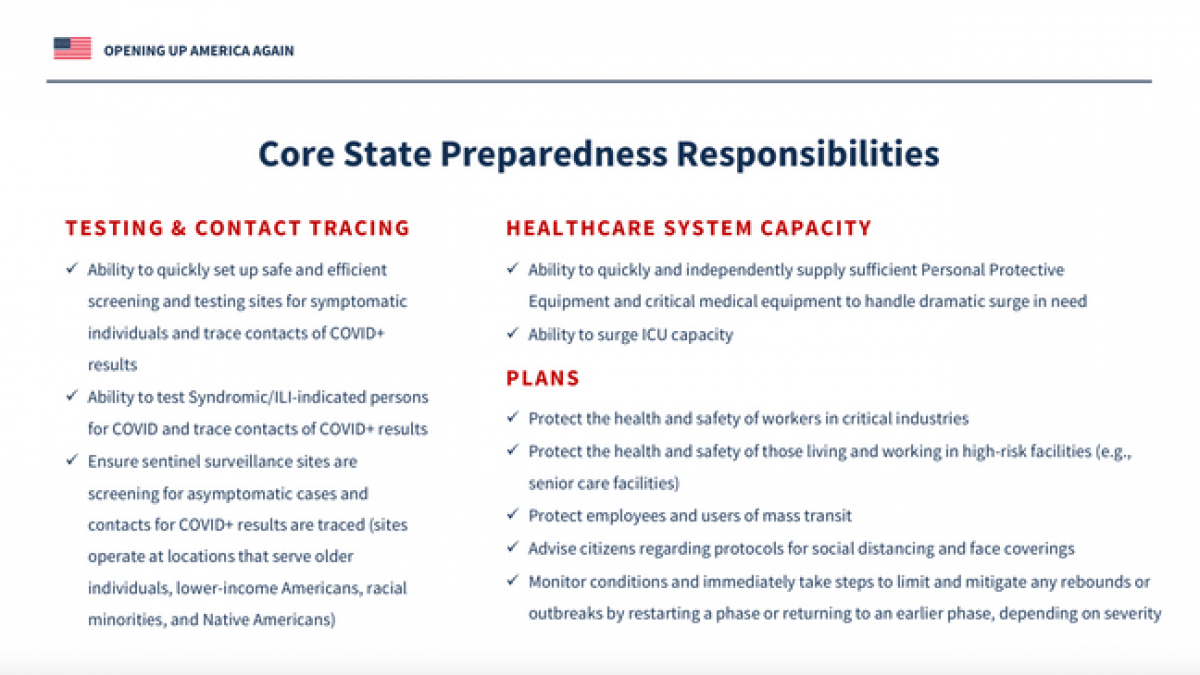Is it all about the testing to reopen the American economy? The national reopening plan hit the streets last Thursday afternoon and things are starting to roll. Even Democrat Michigan Governor Gretchen Whitmer, likely the most tyrannical of all the governors, has relented—planning a May 1 reopening. Some states moved immediately to remove total prohibitions on places —like public beaches in Florida— while maintaining strict social distancing measures. But the gating criteria to enter phase one of the national plan is not going to be met very quickly by many states such as Louisiana, New York, and New Jersey.

The gate requires 14 days of measuring three areas of symptoms, cases, and hospitals to enter that phase. A state must show a downward trend in trajectory of influenza-like illnesses (ILI) reported within a 14-day period and show a downward trajectory of COVID-like syndromic cases reported within a 14-day period, show downward trajectory of documented cases within a 14-day period or downward trajectory of positive tests as a percent of total tests within a 14-day period (flat or increasing volume of tests), and finally, have the capability to treat patients without crisis care and have a robust testing program in place for at-risk healthcare workers, including emerging antibody testing.
Is it really all about testing? Not completely, but testing capability needs to be firmly established. Now that virus epidemic peaks have been reached in state’s like Louisiana, downward trajectories in the symptoms, cases, and hospital capability categories is materializing. However, the requirement for a robust testing program has not been met yet in the view of many governors. As recently as the April 20th Louisiana governor’s press conference, a medical expert projected the state wouldn’t reach the capacity they estimate they’ll need until the end of May, meaning a capability to do 200,000 diagnostic tests per month statewide (set by the state, and may differ across states). The greatest limitation, believe it or not, is the limited availability of the various swabs needed to take a sample from a patient.

Testing issues are being worked hard by the White House Coronavirus Task Force but we still have them and need to get them resolved. There are multiple issues associated with the various types of tests, including the swab issue above.
First, the country is currently using nucleic acid tests to detect infection. During a recent daily briefing, Dr. Deborah Birx said that the country will never be able to test everyone on a regular basis using those tests. However, antigen tests —similar to what is used to detect the flu or strep— could be used for routine testing, such as before people go to work or to school on a daily basis. This is why the federal government is encouraging private sector companies to develop a reliable antigen test.
Second, not all the states are fully aware of the actual full capability or they face technical issues limiting their ability to utilize full capacity. The federal task force is addressing the issue by identifying each state laboratory with issues and providing experts to assist them to reach full capacity.
Finally, antibody testing is slowly coming online, but not quite where it needs to be. Antibody testing is essential for accurately determining the true extent of the case levels and spread of the virus. We do not yet know that information and don’t really need it to start reopening. However, initial studies recently completed (like one in Los Angeles county) show infection is likely “far more widespread than previously thought, up to an estimated 55 times bigger than the number of confirmed cases,” estimating a 4.1 percent infection rate. The good news is, the true situation and complete picture will inform our current measures such as economic shutdown and social distancing, so many of those are likely to change significantly over the short term, as we work on the phased reopening of the economy.
So is it really all about the testing to reopen the economy? No, however we need to be able to do all of this to simply respond rapidly and appropriately when the second wave arrives, an inevitability that no amount of social distancing or economic closures can prevent. Rapidly and appropriately likely means less painful if we’ve all done our jobs right, complemented by successfully phasing this reopening effort. In our next response, before we have a vaccine, we’ll be capable of precision targeting instead of relying on broad swath approaches to mitigation measures.



Leave a Comment
COMMENTS POLICY: We have no tolerance for messages of violence, racism, vulgarity, obscenity or other such discourteous behavior. Thank you for contributing to a respectful and useful online dialogue.